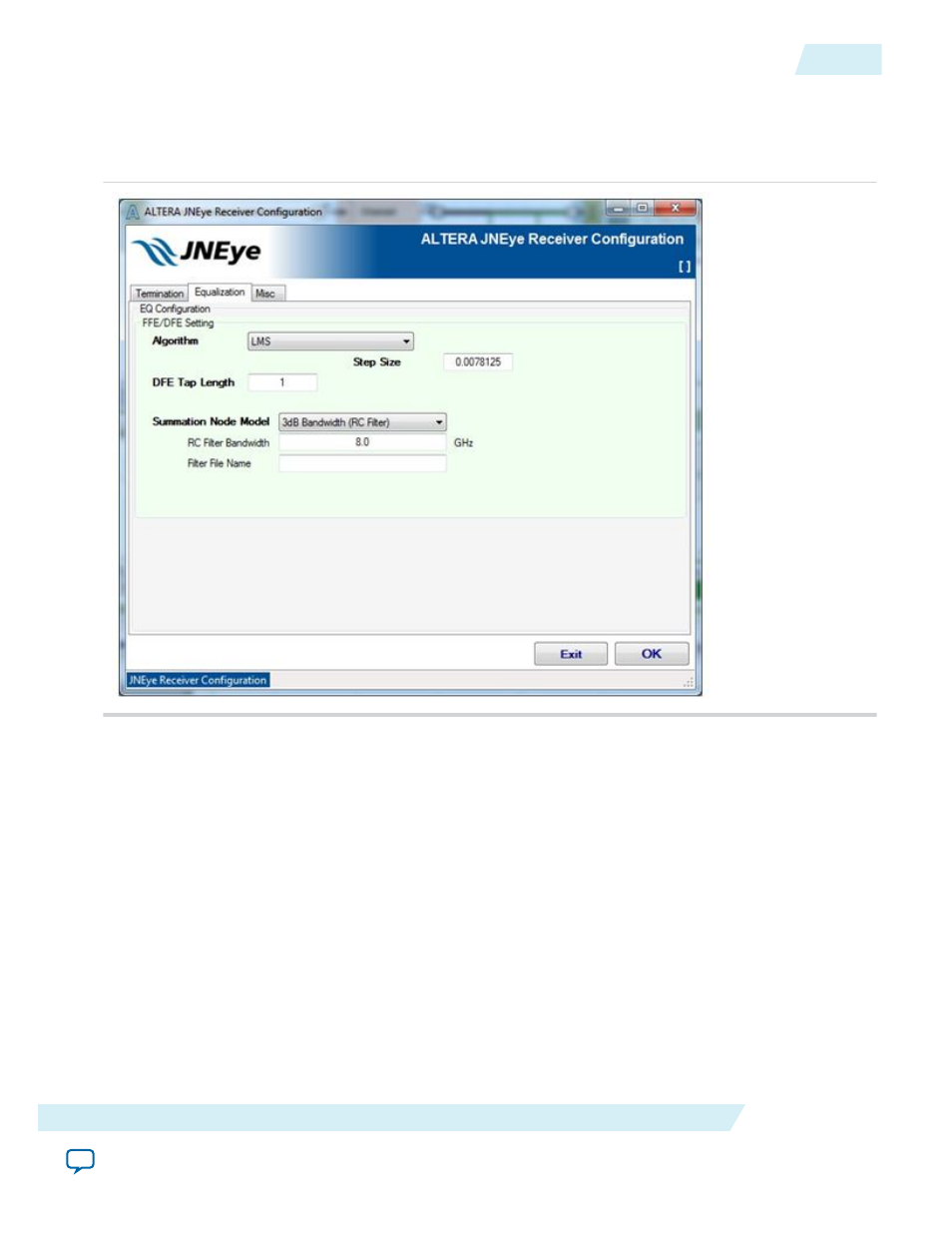Altera JNEye User Manual
Page 63

• Equalization tab—For Arria 10 GX/SX/GT, Stratix V GX, and Arria V GZ devices, the DFE model is
embedded in the JNEye and is not configurable. For Custom and PCI-Express 8GT receivers, the
following options are provided.
Figure 2-39: JNEye Receiver Options: Equalization Configuration
• Algorithm—The DFE is adapted using the LMS algorithm and its variations.
• Step Size—Step size of the LMS algorithm. This parameter controls the speed of the LMS
adaptation. The default value is 0.01.
• DFE Tap Length—Number of DFE taps. This option is only available for Custom and PCI-Express
8GT receivers.
• Summation Node Model—JNEye supports two generic/custom summation node modeling
methods:
• 3dB Bandwidth (RC filter)—Use a first-order RC filter to perform low-pass filtering of the DFE
adjustment.
• S-parameter—Use your S-parameter file to specify a pulse-shaping filter. Only the differential
insertion loss (S
dd21
) is applied in the pulse shaping.
• Misc tab—Reserved. This tab is blank.
IBIS-AMI Receiver—JNEye supports IBIS-AMI receiver modeling. When you select the IBIS-AMI
receiver, the IBIS-AMI Receiver page appears. The IBIS-AMI page includes three tabs for additional
settings of the IBIS-AMI model.
UG-1146
2015.05.04
Receiver Options
2-57
Functional Description
Altera Corporation
